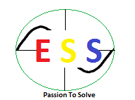SWITCHGEAR MAINTENANCE
It is theoretical and practical analysis of energy consumption for the benefit of energy conservation so as to reduce energy input without affecting performance of any function.
Conducting in depth energy audit by systematic process of accounting and reconciliation for the following:
- Electrical Energy
- Mechanical Energy
- Lighting Energy
- HVAC
Generally, four levels of analysis can be outlined (ASHRAE):
Level 0 – Benchmarking: This first analysis consists in a preliminary Whole Building Energy Use (WBEU) analysis based on the analysis of the historic utility use and costs and the comparison of the performances of the buildings to those of similar buildings. This benchmarking of the studied installation allows determining if further analysis is required;
Level I – Walk-through audit: Preliminary analysis made to assess building energy efficiency to identify not only simple and low-cost improvements but also a list of energy conservation measures (ECMs, or energy conservation opportunities, ECOs) to orient the future detailed audit. This inspection is based on visual verifications, study of installed equipment and operating data and detailed analysis of recorded energy consumption collected during the benchmarking phase;
Level II – Detailed/General energy audit: Based on the results of the pre-audit, this type of energy audit consists in energy use survey in order to provide a comprehensive analysis of the studied installation, a more detailed analysis of the facility, a breakdown of the energy use and a first quantitative evaluation of the ECOs/ECMs selected to correct the defects or improve the existing installation. This level of analysis can involve advanced on-site measurements and sophisticated computer based simulation tools to evaluate precisely the selected energy retrofits;
Level III – Investment-Grade audit: Detailed Analysis of Capital-Intensive Modifications focusing on potential costly ECOs requiring rigorous engineering study.
OBJECTIVE
- Energy Savings.
